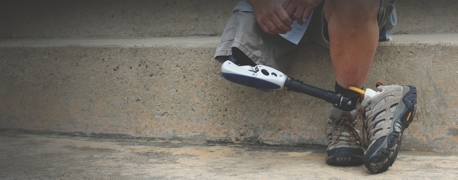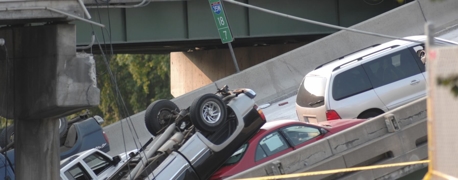Neighborhood Hazards Part 1: When Kids Are Hurt Close to Home

Childhood should be carefree. But the truth is, any neighborhood can be home to hazards capable of causing devastating injuries to children. Power lines, lawn mowers, trampolines—ordinary features of daily life—have one thing in common: they’re all responsible for sending thousands of children to the hospital every year.
And in far too many cases, these injuries are catastrophic or even fatal.
Power Lines & Transformers
Overhead power lines. Leaning utility poles. Transformers, those green metal boxes tucked near sidewalks or behind apartment buildings. Most of us walk past them without a second thought, but to a child, these may seem like objects to climb, open, or explore.
The voltage carried by utility lines is significant, with standard residential distribution lines energized at 7,200 to 14,400 volts, depending on the region and grid design. Ground-level transformers can step that voltage down to 120 to 240 volts for home use, but even that is more than enough to cause cardiac arrest, severe burns, or death.
A shock of just 120 volts can be fatal. Higher-voltage lines, when touched directly or approached closely enough to arc, can cause the body to go into instant electrical trauma. Muscles lock, respiratory function can be paralyzed, and burns are often so deep that they require skin grafts or amputation. In some cases, the internal damage is far worse than what’s visible on the surface.
The danger isn’t limited to physical contact. After storms, energized lines can fall into puddles, fences, or playground equipment—creating deadly traps. And in neighborhoods where maintenance is delayed or neglected, wires may sag low enough for a child to reach.
The numbers don’t lie: electrical injuries send roughly 30,000 people to the hospital every year in the United States, and about 20% of those injured are children. In too many cases, they happen during what should have been an ordinary day of play in the neighborhood.
Take the story of a 5-year-old girl who was seriously injured after opening an unlocked ground transformer box outside her family’s apartment in Lubbock, Texas. Or an incident involving a teen in El Paso who was severely shocked, burned, and fell 40 feet after he climbed a park utility pole via the support guy-wires. In Limestone County, two young siblings were severely burned after they touched a fallen live power line left unrepaired after a storm.
These are not isolated incidents or freak accidents—they are examples of how failures of maintenance, communication, and oversight have caused catastrophic harm to innocent children.
Lawn Mowers
A common sight in neighborhoods nationwide, both riding and push mowers pose serious risks to young children. More than 9,000 children are injured by lawn mowers every year—most of them under 10 years old. Children may be backed over while playing in the yard, struck by flying debris, burned by hot mower parts, or injured while riding as passengers.
A study in Injury Epidemiology found that lawn mowers are the number one cause of major limb amputations in children under 10. In Cedar Falls, Iowa, a three-year-old boy was left fighting for his life after he was accidentally backed over by a riding lawn mower. After 53 days in the hospital and more than 30 surgeries, he survived and was able to walk again, but others aren’t so fortunate. Of the approximately 75 mower-related fatalities each year, about one-fifth are children.
Riding mowers can weigh over 500 pounds and reach speeds of 5 to 8 miles per hour, yet many models lack automatic shut-off features when reversing or when the operator leaves the seat. These accidents often happen in an instant, but they leave children with devastating injuries, facing years of surgeries, prosthetics, and painful recovery.
The American Academy of Pediatrics urges strict safety practices:
- Never let children ride on mowers, even when turned off.
- Keep kids indoors or far away (with supervision) when mowing.
- Always shut off the machine if a child enters the area.
Manufacturers have long been aware of the risks, and some improvements have been made to protect both adults and children. This includes blade brake and operator presence controls, which automatically stop the blade when the user releases the handle. Pressure-sensitive seat switches that shut off riding mowers when the operator leaves the seat, shields to prevent flying debris, and reverse mowing lockouts are also meant to prevent accidents—yet lawn mower injuries involving children have remained steady for the past 40 years.
Trampolines
Found in backyards, outdoor playgrounds, and jump parks, trampolines are often seen as a fun way for kids to get their energy out—but they are also hazardous. Trampolines send more than 100,000 people to the emergency room each year, with children accounting for over 90% of these injuries. About one-third involve broken bones, and many result in concussions, spinal trauma, or even paralysis.
The American Academy of Pediatrics recommends “keeping kids away from trampolines, except in settings with professional coaches and specialized equipment.”
Three-quarters of trampoline injuries occur when more than one person is jumping at the same time. A smaller child may be catapulted into the air by a larger child’s bounce (called “double bouncing”), causing them to lose their balance or be thrown from the trampoline.
The biggest risks of neighborhood trampolines include:
- Double bouncing
- Falls off trampolines, over or through gaps in safety nets
- Attempted flips or somersaults
- Collisions with other jumpers
Local trampoline parks add another layer of risk. These commercial facilities have multiple trampoline “courts” that may allow dozens of people to bounce simultaneously. Poor trampoline design, inadequate maintenance, and negligent supervision can lead to life-changing injuries. Children are twice as likely to need surgery after a trampoline park injury as opposed to a home trampoline injury, according to a recent study.
A Boston 25 News investigation focused on lawsuits filed across the country against several large trampoline park operators. The report uncovered a disturbing pattern of serious injuries, including broken necks, traumatic brain injuries, and spinal fractures.
Trampoline manufacturers have a responsibility to design and produce trampolines that are reasonably safe to use, and trampoline park operators must ensure facilities are not only properly maintained but that visitors are supervised and rules are enforced.
Lapses in safety standards leave children and their families paying the ultimate price.
How “Attractive Nuisance” Laws Affect Neighborhood Hazards
Neighborhood hazards are not always obvious. Some actually attract children, drawing them into dangerous situations they don’t understand. This includes power lines, transformers, trampolines, and lawn mowers, as well as unfenced pools or natural bodies of water, empty homes and buildings, and construction sites.
The legal term “attractive nuisance” refers to objects or conditions that are likely to entice children and pose serious harm. These laws recognize a simple truth: children don’t always grasp danger the way adults do. A toddler doesn’t know that the colorful electrical box behind the apartment complex could be deadly. A 10-year-old might see a riding mower as a fun vehicle to drive around the yard. A young teen won’t understand the scope of danger associated with climbing guy-wires on a utility pole.
Because of this, each state has specific laws that place a special duty on property owners—especially when they should know or reasonably expect that children might come near a hazard. If a condition is likely to attract children and poses a risk of serious injury or death, owners must take reasonable steps to secure or remove the danger. That might mean locking a transformer box, quickly securing downed power lines, or preventing access to vacant buildings or lots.
Most importantly, attractive nuisance laws shift responsibility away from the child and onto the adult (or company) who failed to protect them. For families, this means that when a child is seriously hurt by an unguarded neighborhood hazard, they may have the right to take legal action.
These cases aren’t about assigning blame. They’re about seeking justice when a child is harmed because someone failed to take simple, reasonable steps. They’re about making sure that no other family has to suffer the same preventable tragedy. And they’re about holding people and companies accountable for putting children in harm’s way—whether through neglect, poor planning, or a refusal to prioritize safety over convenience or cost.
What Can Parents Do?
It’s not a parent’s job to fix systemic safety failures, to make sure utility companies maintain their equipment, or to fight for stricter standards concerning children’s products or play areas.
However, there are some proactive measures that can help:
- Teach children to avoid power lines, poles, and electrical boxes.
- Keep kids indoors while mowing, and never allow them to ride along.
- Enforce “one jumper at a time” rules on trampolines.
- Inspect backyard play areas regularly for hazards.
- Report low-hanging wires, open transformers, or unsafe structures to local authorities or utility companies.
Neighborhood hazards are largely predictable, preventable dangers. And when companies fail to do the right thing, the consequences fall on the most vulnerable: children who don’t know any better, and parents who were never warned.


